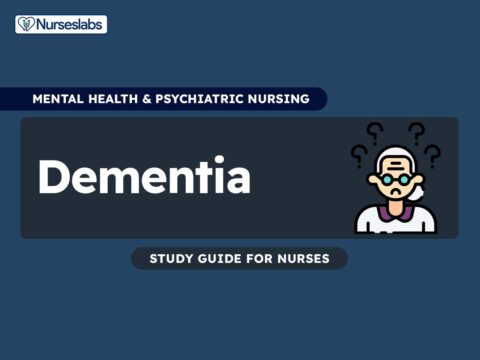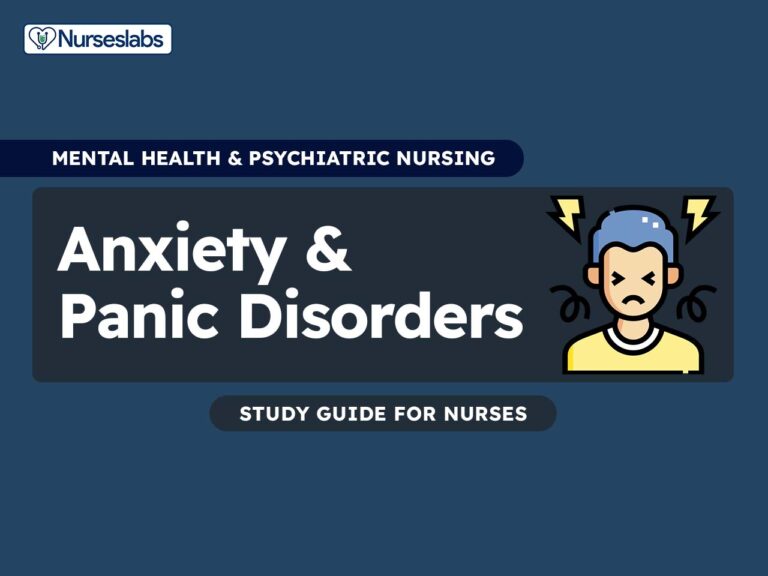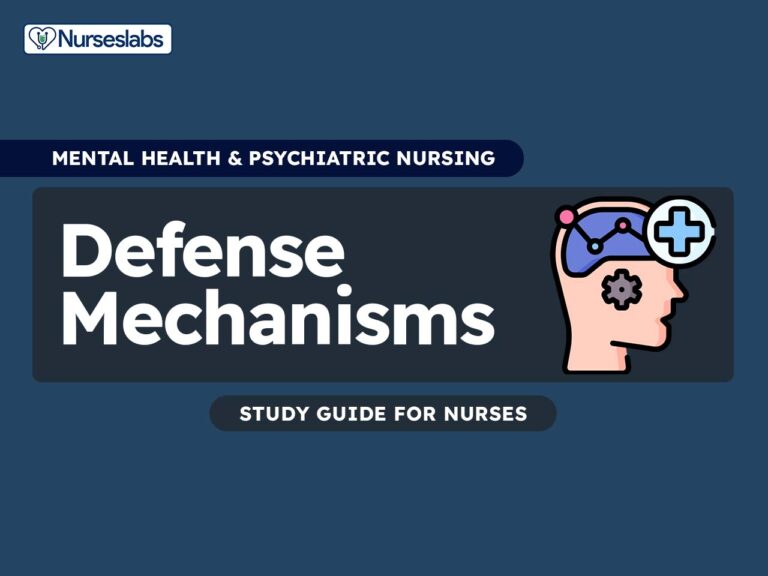The American Psychiatric Association (APA, 2000) Diagnostic and Statistical Manual of Mental Disorders, Fourth Edition, Text Revision (DSM-IV-TR) identifies two categories of sexual disorders: paraphilias and sexual dysfunctions. In DSM-5, though, the subject is classified into three chapters, particularly sexual dysfunctions, gender dysphoria, and paraphilic disorders.
Sexual dysfunctions, paraphilias, and gender dysphoria are complex and sensitive areas of mental health and sexual health that nurses may encounter. Understanding and addressing these conditions with sensitivity and respect are important for providing competent and compassionate care. This nursing guide aims to provide a brief overview of these concepts and their significance in nursing practice.
What are Sexual Disorders?
Sexual disorders, also known as sexual dysfunctions, are a group of conditions that involve difficulties or disruptions in one or more aspects of sexual function, satisfaction, or pleasure. These disorders can affect individuals of all genders and ages and may result in physical, emotional, and interpersonal challenges.
- Paraphilias are characterized by any intense and persistent sexual interest other than sexual interest in genital stimulation or preparatory fondling with phenotypically normal, physiologically mature, consenting human partners.
- Paraphilic disorder with the term ‘disorder’ that was specifically added to DSM-5 to indicate a paraphilia that is inducing distress or impairment to the person or a paraphilia whereby satisfaction caused personal harm, or risk of harm, to others.
- Sexual dysfunction disorders can be described as an impairment or disturbance in any of the phases of the sexual response cycle.
- Gender dysphoria involves a conflict within a person’s physical or assigned gender and the gender with which he/she/they identify.
- Gender identity disorders are characterized by strong and persistent cross-gender identification accompanied by persistent discomfort with one’s assigned sex.
Types of Paraphilias
The term “paraphilia” is used to identify repetitive or preferred sexual fantasies or behaviors; types of paraphilias include the following:
- Exhibitionism. The major symptoms include recurrent, intense sexual urges, behaviors, or sexually arousing fantasies, of at least 6 months duration, involving the exposure of one’s genitals to an unsuspecting stranger.
- Fetishism. In DSM-5, fetishism involves recurrent, intense sexual fantasies, of at least 6 months duration, involving the use of nonliving objects (such as undergarments or high-heeled shoes) or a highly specific focus on a body part (most often nongenital, such as feet) to attain sexual arousal.
- Frotteurism. This disorder is defined in DSM-5 as the recurrent preoccupation with intense sexual urges or fantasies, of at least 6 months duration, involving touching or rubbing against a nonconsenting person and the individual has acted on these sexual urges with a nonconsenting person, or the sexual urges or fantasies cause clinically significant distress or impairment in social, occupational, or other important areas of functioning.
- Pedophilia. The DSM-IV-TR describes the essential feature of pedophilia as recurrent, sexual urges, behaviors, or sexually arousing fantasies, of at least 6 months duration, involving sexual activity with a prepubescent child; the age of the molester is 16 or older and is at lest 5 years older than the child. Pedophilia is termed pedophilic disorder in DSM-5 and the manual specifies it as a paraphilia involving strong and habitual sexual urges towards and fantasies about prepubescent children that have either been acted upon or which cause the person with the attraction distress or interpersonal difficulty.
- Sexual masochism. The identifying behavior of this disorder is recurrent, intense sexual urges, behaviors, or sexually arousing fantasies, of at least 6 months duration, involving the act of being humiliated, beaten, bound, or otherwise made to suffer (APA, 2000). DSM-5 indicates that a person may have a masochistic sexual interest but that the diagnosis of sexual masochism disorder would only pertain to individuals who also report psychosocial distress because of it.
- Sexual sadism. The essential feature of sexual sadism is identified as recurrent, intense sexual urges, behaviors, or sexually arousing fantasies, of at least 6 months duration, involving acts in which the psychological or physical suffering (including humiliation) of the victim is sexually exciting.
- Voyeurism. This disorder is identified as recurrent, intense, sexual urges, behaviors, or sexually arousing fantasies, of at least 6 months duration, involving the act of observing an unsuspecting person who is naked, in the process of disrobing, or engaging in sexual activity.
Types of Sexual Dysfunctions
Sexual dysfunctions may occur in any phase of the sexual response cycle; types of sexual dysfunctions include the following:
- Hypoactive sexual disorder. This disorder is defined by the DSM-5 as persistent or recurrently deficient sexual or erotic thoughts, fantasies, and desire for sexual activity.
- Sexual aversion disorder. This disorder is characterized by a persistent or recurrent extreme aversion to, and avoidance of, all (or almost all) genital sexual contact with a sexual partner. In the development from DSM-IV-TR to DSM-5 (APA, 2013), the diagnosis of sexual aversion disorder (SAD) has been removed.
- Female sexual arousal disorder. This disorder is identified in the DSM-IV-TR (APA, 2000) as a persistent or recurrent inability to attain, or to maintain until completion of the sexual activity, an adequate lubrication or swelling response of sexual excitement. It is defined in the DSM-5 as lack of, or significantly reduced, sexual interest/arousal.
- Male erectile disorder. This disorder is defined in the DSM-5 as the recurrent inability to achieve an erection, the inability to maintain an adequate erection, and/or a noticeable decrease in erectile rigidity during partnered sexual activity.
- Female orgasmic disorder (anorgasmia). This disorder is defined by the DSM-IV-TR as a persistent or recurrent delay in, or absence of, orgasm following a normal sexual excitement phase. As classified by the DSM-5, female orgasmic disorder is characterized by difficulty experiencing orgasm and/or markedly reduced intensity of orgasmic sensations.
- Male orgasmic disorder (retarded ejaculation). With this disorder, the man is unable to ejaculate, even though he has a firm erection and has had more than adequate stimulation. This disorder is also known as delayed ejaculation (DE) or delayed orgasm (DO). Delayed ejaculation (DE) is defined in DSM-5 as a persistent difficulty or inability to achieve orgasm despite the presence of adequate desire, arousal, and stimulation.
- Premature ejaculation. The DSM-IV-TR describes this disorder as persistent or recurrent ejaculation with minimal sexual stimulation before, on, or shortly after penetration and before the person wishes it. In DSM-5, premature ejaculation is defined as a persistent or recurrent pattern of ejaculation occurring during partnered sexual activity within about one minute following vaginal penetration and before the individual wishes it.
- Dyspareunia. Dyspareunia is defined as recurrent or persistent genital pain associated with sexual intercourse, in either a man or a woman, that is not caused by vaginismus,
lack of lubrication, another general medical condition, or the physiological effects of substance use (APA, 2000). - Vaginismus. Vaginismus is characterized by an involuntary constriction of the outer third of the vagina, which prevents penile insertion and intercourse. In DSM-5, the spasm-based definition of vaginismus was omitted, and vaginismus was combined with dyspareunia, the other “sexual pain disorder,” which resulted in genito-pelvic pain/penetration disorder (GPPPD).
Statistics and Incidences
Gender identity and sexuality disorders are relatively rare compared to other psychiatric disorders.
- Although there are no large-scale epidemiological studies to provide true estimates recent studies suggest roughly 1:10,000 to 1:30,000.
- Sex ratios of adults with GID (largely based on referrals to clinics) have fluctuated with more males than females in earlier studies to a more equal ratio in many recent reports.
- Childhood GID is more prevalent in males, roughly 6 to 1; in adolescence, the ratio is more equal
Causes
Predisposing factors to paraphilias include:
- Biological factors. Various studies have implicated several organic factors in the etiology of paraphilias; destruction of parts of the limbic system in animals has been shown to cause hypersexual behavior (Becker & Johnson, 2008); temporal lobe diseases, such as psychomotor seizures or temporal lobe tumors, have been implicated in some individuals with paraphilias; abnormal levels of androgens also may contribute to inappropriate sexual arousal.
- Psychoanalytic theory. The psychoanalytic approach defines a paraphiliac as one who has failed the normal developmental process toward heterosexual adjustment (Sadock & Sadock, 2007).
Predisposing factors to sexual dysfunction include:
- Sexual desire disorders. In men, these disorders have been linked to low levels of serum testosterone and to elevated levels of serum prolactin; evidence also exists that suggests a relationship between serum testosterone and increased female libido; various medications, such as antihypertensives, antipsychotics, antidepressants, anxiolytics,
and anticonvulsants, as well as chronic use of drugs such as alcohol and cocaine, have also been implicated in sexual desire disorders. - Sexual arousal disorders. These may occur in response to decreased estrogen levels in postmenopausal women; medications such as antihistamines and cholinergic blockers may produce similar results; erectile dysfunctions in men may be attributed to arteriosclerosis, diabetes, temporal lobe epilepsy, multiple sclerosis, some medications (antihypertensives, antidepressants, tranquilizers), spinal cord injury, pelvic surgery, and chronic use of alcohol.
- Orgasmic disorders. In women, these may be attributed to some medical conditions (hypothyroidism, diabetes, and depression) and certain medications (antihypertensives,
antidepressants); medical conditions that may interfere with male orgasm include genitourinary surgery (e.g., prostatectomy), Parkinson’s disease, and diabetes. - Sexual pain disorders. In women, these can be caused by disorders of the vaginal entrance, irritation or damage to the clitoris, vaginal or pelvic infections, endometriosis,
tumors, or cysts. Painful intercourse in men may be attributed to penile infections, phimosis, urinary tract infections, or prostate problems.
Clinical Manifestations
Subjective and objective data on symptoms of paraphilias include the following:
- Exposure of one’s genitals to strangers.
- Sexual arousal in the presence of nonliving objects.
- Touching and rubbing of one’s genitals against an unconsenting person.
- Sexual attraction to, or activity with, a prepubescent child.
- Sexual arousal from being humiliated, beaten, bound, or otherwise made to suffer.
- Sexual arousal by inflicting psychological or physical suffering on another individual.
- Sexual arousal from dressing in the clothes of the opposite sex.
- Sexual arousal from observing unsuspecting people either naked or engaged in sexual activity.
- Masturbation often accompanies the activities described when they are performed solitarily.
- The individual is markedly distressed by these activities.
Subjective and objective data on symptoms of sexual disorders include the following:
- Absence of sexual fantasies and desire for sexual activity.
- The discrepancy between partners’ levels of desire for sexual activity.
- Feelings of disgust, anxiety, or panic responses to genital contact.
- Inability to produce adequate lubrication for sexual activity.
- Absence of a subjective sense of sexual excitement during sexual activity.
- Failure to attain or maintain a penile erection until completion of sexual activity.
- Inability to achieve orgasm (in men, to ejaculate) following a period of sexual excitement is judged adequate in intensity and duration to produce such a response.
- Ejaculation occurs with minimal sexual stimulation or before, on, or shortly after penetration and before the individual wishes it.
- Genital pain occurs before, during, or after sexual intercourse.
- Constriction of the outer third of the vagina prevents penile penetration.
Medical Management
Modalities that may be considered in the treatment of gender dysphoria include pharmacologic therapy, psychological and other nonpharmacologic therapies, and sexual reassignment surgery (SRS).
- Psychological and speech therapy. Psychological intervention may be beneficial; individual treatment focuses on understanding and dealing with gender issues; group, marital, and family therapy can provide a helpful and supportive environment; speech therapy may help male-to-female individuals use their voice in a more feminine manner.
- Sexual reassignment surgery. Controversy exists regarding whether adolescents should be allowed to pursue SRS; many countries deny SRS to adolescents; however, early treatment may be beneficial in adolescents whose secondary sex characteristics (eg, facial hair, lowered voice, and breast development) have not yet developed fully. In such cases, parental involvement and approval are essential.
Pharmacologic Management
The goal of pharmacotherapy is to inhibit or promote the expression of secondary sex characteristics in males and females.
- Progestins. These agents may be used to inhibit the secretion of pituitary gonadotropins.
- Gonadotropin-releasing hormone agonists. Gonadotropin-releasing hormone (GnRH) analogs produce a hypogonadotrophic-hypognadal state by down-regulation of the pituitary gland.
- Aldosterone antagonists, selective. Aldosterone antagonists may block androgen receptors.
- Antineoplastics, antiandrogens. Antiandrogens are another group of agents used as a first-line therapy for hirsutism.
- Oral contraceptives. Oral contraceptives inhibit ovarian androgen production and are probably the first choice for young women with hirsutism who do not want to become pregnant.
- Estrogen derivatives. These hormones are used for replacement therapy in hypogonadism associated with a deficiency or absence of endogenous testosterone or estrogen.
- Androgens. Androgens are used for replacement therapy in hypogonadism associated with a deficiency or absence of endogenous testosterone.
Nursing Management
Nursing management of a patient with gender and sexual identity disorders includes the following:
Nursing Assessment
Nursing assessment includes:
- Sexual dysfunction. Sexual dysfunction is the person’s experience of change in sexual dysfunction; the person views this change as unsatisfying, unrewarding, inadequate, or socially inappropriate.
Nursing Diagnosis
Based on the assessment data, the major nursing diagnoses are:
- Sexual dysfunction related to physical or psychosocial abuse.
- Ineffective sexuality pattern related to conflicts with sexual orientation or variant preferences.
- Disturbed personal identity related to parenting patterns that encourage culturally unacceptable behaviors for assigned gender.
- Impaired social interaction related to socially and culturally unacceptable behavior.
- Low self-esteem related to rejection by peers.
Nursing Care Planning and Goals
The major nursing care planning goals for sexual dysfunctions, gender dysphoria, and paraphilias are:
- Client will resume sexual activity at level satisfactory to self and partner by (time is individually determined).
- Client will express satisfaction with own sexuality pattern.
- Client and partner will express satisfaction with sexual relationship.
- Client will demonstrate behaviors that are appropriate and culturally acceptable for assigned gender.
- Client will express personal satisfaction and feelings of being comfortable in assigned gender.
- Client will interact with others using culturally acceptable behaviors.
Nursing Interventions
The nursing interventions are:
- Determine stressors. Help the client determine the time dimension associated with the onset of the problem and discuss what was happening in his or her life situation at that time.
- Encourage discussion of the disease process. Encourage the client to discuss disease process that may be contributing to sexual dysfunction; ensure that the client is aware that alternative methods of achieving sexual satisfaction exist and can be learned through sex counseling if he or she and partner desire to do so.
- Identify factors that affect the client’s sexuality. Note cultural, social, ethnic, racial, and religious factors that may contribute to conflicts regarding variant sexual practices.
- Be accepting and nonjudgmental. Sexuality is a very personal and sensitive subject; the client is more likely to share this information if he or she does not fear being judged by the nurse.
- Provide positive reinforcement. Observe client behaviors and the responses he or she elicits from others; give social attention (e.g., smile, nod) to desired behaviors.
Evaluation
Nursing goals are met as evidenced by:
- Client was able to resume sexual activity at a level satisfactory to self and partner by (time is individually determined).
- Client was able to express satisfaction with own sexuality pattern.
- Client and partner was able to express satisfaction with sexual relationship.
- Client was able to demonstrate behaviors that are appropriate and culturally acceptable for
- assigned gender.
- Client was able to express personal satisfaction and feelings of being comfortable in the assigned gender.
- Client was able to interact with others using culturally acceptable behaviors.
Documentation Guidelines
Documentation in a patient with gender and sexuality disorders includes the following:
- Individual findings include factors affecting, interactions, the nature of social exchanges, and specifics of individual behavior.
- Cultural and religious beliefs, and expectations.
- Plan of care.
- Teaching plan.
- Responses to interventions, teaching, and actions performed.
- Attainment or progress toward the desired outcome.





































Leave a Comment